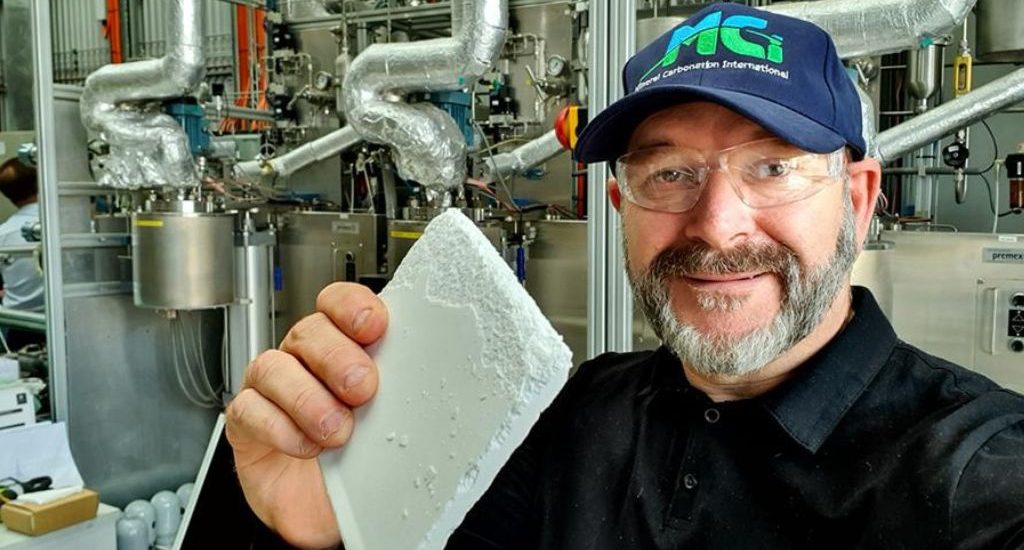- 28 June 2022
- Posted by: Canberra Innovation Network
- Category: Coworking

As it becomes increasingly apparent that a) the energy transition is not progressing at a rapid-enough pace to achieve the timelines set under global decarbonization goals, and b) that, as the National Academies of Sciences admits, these goals cannot be achieved through carbon reduction via renewables alone, increasing attention is being paid to technologies related to carbon capture, storage and usage (CCUS).
Towards that end, two members of the House of Representatives, Ann Kuster (D-NH) and Anthony Gonzalez (R-OH) recently introduced what they’re calling the REMOVE Act, a bill that would create “a whole-of-government approach to experiment, prototype, and produce carbon dioxide removal (CDR) technology.” The bill would direct relevant federal agencies to include the development of CDR as part of their annual budget requests.
Towards this end of promoting CDR/CCUS solutions, a diverse group of 29 companies with internationally-known names like Airbus, Mitsubishi, Bank of AmericaBAC +0.1% and Heathrow Airport have joined to form the Coalition for Negative Emissions (CNE). Among the CNE goals is to “remove emissions that are currently impossible to entirely reduce in industries like aviation, agriculture and construction, and eventually begin to reverse the effects of climate change,” and “not just to decarbonise, but to decarbonise while ensuring continued economic progress.”
Noting that “[d]elivering a portfolio of negative emissions solutions – including both nature- and technology-based solutions – requires an immediate increase in capital activity – the effort required is monumental but achievable,” CNE goes onto say that “Negative emissions solutions are ready to scale sustainably today.” Obviously, a whole-of-government effort like the one envisioned in the REMOVE Act could, if properly implemented, help speed the process along, and as CNE notes, could even help the energy transition get back on track with global temperature containment goals.
One company with a carbon capture and utilization technology solution that is ready to scale sustainably today is Australian based Mineral Carbonation International (MCi), which has developed a “scalable carbon platform that safely captures and converts industrial CO2 emissions into solid bulk materials used in new low-carbon products for construction, manufacturing and consumer markets – enabling a circular economy.”
In a recent interview, MCi Co-Founder and CEO Marcus Dawe told me his company is already engaging with a variety of international customers on various feasibility studies and projects that are ready to roll-out. “We’re very bullish on where we’re at – we’ve got quite a lead in transforming emissions into valuable products. Our process is natural, permanent, scalable, and profitable.”
That last aspect of profitability, of course, is a huge key to success in this arena. If CCUS can become a profit center for big companies rather than a cost center, then private investment will almost certainly flood into the sector. This would be especially true in hard-to-abate industries like manufacturing, industrial, mining and fossil fuel energy production.
Dawe told me MCi’s solution requires three factors to be successful: CO2, mineral feedstock, and a market for the materials. “We are speeding up a natural Earth process called weathering.”
“Firstly, we need CO2,” he said. “On that part, we’re agnostic where it comes from. We can take it from a pipeline, a refinery, from direct air capture or we can take it from industrial flue gas directly. We can take it from steelworks or a cement plant, an ethanol or fertilizer plant – it doesn’t matter. We use captured CO2, and react it with a variety of mineral feedstocks, and what’s usually close and readily available to the abatement customer is their own industrial wastes. From steel, for example we can use steel slag. But usually wastes cannot scale enough and we specialize in the larger scale mineral feedstocks, such as the abundantly available quarried rocks like serpentinite and olivine, which are rich with magnesium or calcium. Finally to make our process economical we need a market for the materials produced from our transformation process.”
Dawe said the feedstock may contain contaminants, but the MCi technology will knock them out and remediate them. “MCi pulls out the CO2, scrubs it, and that CO2 then goes into our process to react with the minerals in the feedstock” converting the gas into a solid. Through this process, MCi creates bulk materials like magnesium carbonates, amorphous silica, calcium carbonates in powder form.
Those powders are provided to customers who use them to create an array of products including drywall, carbon-neutral cements and concrete products, glass, paper, plastics and many other widely used consumer products. “We aim to sell our materials for use in our customers’ products and they are used to drive down their carbon intensity. A double reduction in the carbon economics” Dawe said. “When our product is used in a dry wall, that’s a negative-emissions material. So, not only do we remove primary CO2 from emitters, but we also displace the usual high carbon-intensity materials, like gypsum or calcined limestone.”
“The beauty of our technology is that we can scale that up” Dawe said. “There is plenty of CO2 and natural mineral feedstocks, and MCi is witnessing a fast-growing interest and experimentation by prospective customers of its low carbon embodied materials. We are not just talking about swapping carbon intensive raw materials with the same low carbon material, but a willingness by manufacturers to explore new formulations where MCi’s materials displace an unrelated material, too.”
There has never been any real question that meeting the goals of “net-zero by 2050” and other global carbon reduction targets will inevitably require a variety of solutions. The easy virtue-signaling opportunities for politicians and boosters have mainly involved the pushing of renewables and electric vehicles, and the realm of CCUS/CDR is not nearly as amenable to warm and fuzzy visuals and messaging.
But at the end of the day, CCUS seems likely to end up being every bit as crucial to enabling the world to arrive at an acceptable climate landing spot.
Original article by David Blackmon for Forbes.

